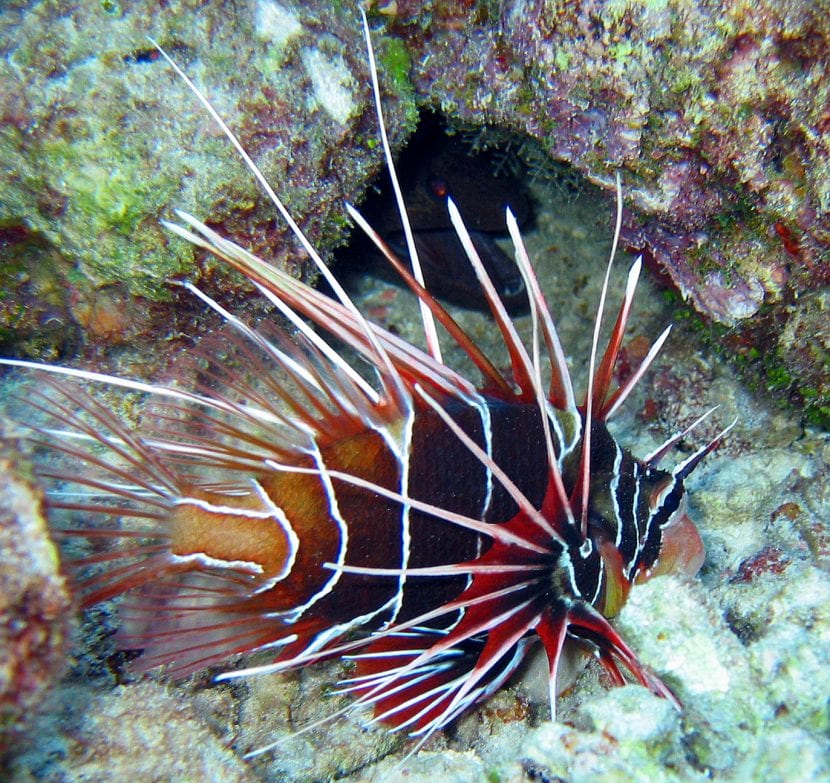
The natural is full of endless species, each more unique. The vast majority are usually harmless to humans, on the other hand, there are others that pose a potential danger. Many of them are found in our rivers, lakes and seas. Nowadays, there are highly poisonous fish.
Next, we detail who are these little animals that have such a macabre honor, as well as their habitat, characteristics, customs, etc. In this way they will be able to distinguish them if they are lucky, or unlucky, to run into one of them.
Zebrasoma surgeonfish
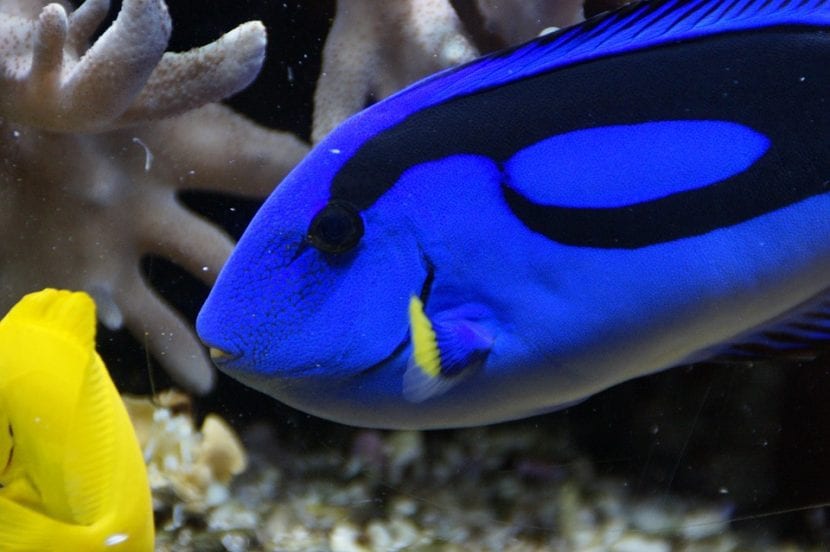
El Zebrasoma surgeonfish (Zebrasoma flavescens)It is one of the most beautiful fish that exist and lives throughout the Pacific Ocean, being popular in areas such as Hawaii, Japan, Micronesia, the Mariana Islands, the Philippines and Taiwan.
Its shape is very characteristic, since it is very similar to that of an arrow or blade of an ax. The body of this small animal is compressed on the sides, its dorsal and ventral fins being the same size. It also has a very small and narrow beak that looks like.
A hallmark of these fishes, like that of all surgeon fishes, are its two removable spines located on both sides of the tail fin and that serve as a means of defense. It lives mainly on coral reefs where it mainly feeds on algae.
Although it is edible, you have to be very careful since its intake can cause poisoning by 'ciguatera', which can lead to facial numbness, stinging, hypotension, and a slow heart rate.
Fugu fish
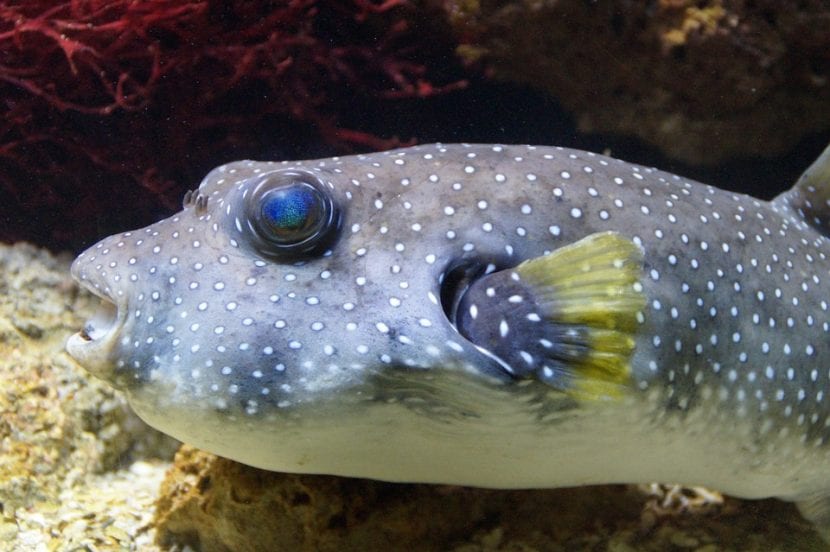
El fugu fish It belongs to the family of the so-called puffer fish. It stands out for having a whitish body with black spots, a huge head and prominent eyes. It is not large, although there have been cases of individuals that have reached up to one meter in length.
It is very, very popular in Japan, since it is the main protagonist of one of the culinary pieces par excellence of the Japanese country. But be careful, you have to pay special attention to this fish not only for its flavor, but for its strong poison.
Both the liver, the eyes and, in the case of females, the ovaries are loaded with a strong poison called 'tetrodotoxin', capable of causing death just 6 hours after eating. It should be noted that no antidote is known today.
Stone fish
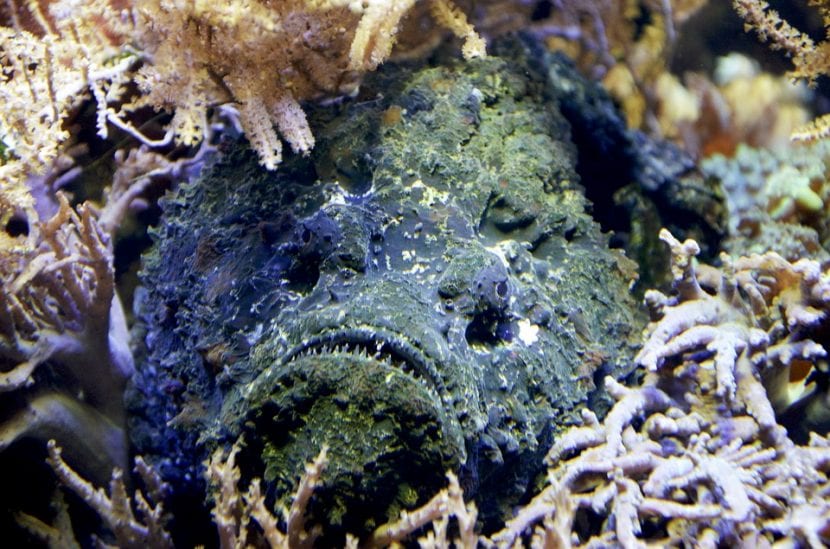
El stone fish It is typical of the tropical waters that bathe the Indian and Pacific Oceans, and more specifically in the areas of Australia and the Malay Archipelago.
At first glance, and if we don't stop to stare at it, it may seem like we are looking at a small rock, since its body has adopted such a morphology in order to design a very effective camouflage mechanism. This is the reason for the name of this species.
In their fins, which seem to be formed by a kind of spikes, there are some small spines that have some glands charged with a potent and deadly poison.
This poison is composed of cytotoxins and neurotoxins They cause severe pain that reaches its maximum degree one hour after having suffered the bite. The effects that must be added to this pain are: headache, nausea and vomiting, intestinal spasms, seizures, introduction into a coma, cardiorespiratory arrest, paralysis of muscle groups and, in extreme cases, death.
But the arsenal of this fish does not end here. It also has tuber-like glands that secrete a toxin.
Lion fish
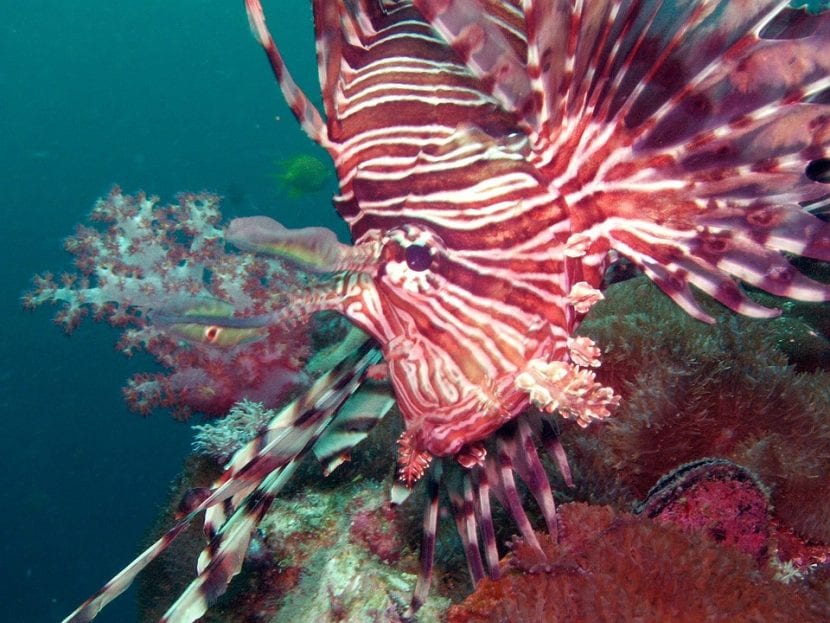
El Lion fish, which is also mistakenly known as the scorpion fish, has established its place of residence in the Iagoon (coastal lagoon) and coral reefs of the Indian and Pacific Oceans. In more detail, this species has been found in East Africa, Southeastern Japan, Australia, Kermadec, etc.
It is very striking due to the stripes on its pectoral fins and its long antennae. They do not have any tissue between the rays or spines of their dorsal fins.
They are not fish that are used to living with other individuals, but they are solitary and calm animals. During the day they hide in areas such as crevices and under rocks, while at night they are dedicated to catching their prey: shrimp, crabs and the odd fish smaller than themselves.
They hunt in their hiding places, putting their heads out of them waiting for a potential meal to pass in front of them. They attack through the poison in the glands of the rays of its ventral and anal fin.
The bite of this animal can generate painful wounds, while the toxin it injects often leads to fever, circulatory failure, and even respiratory paralysis.
Scorpion fish
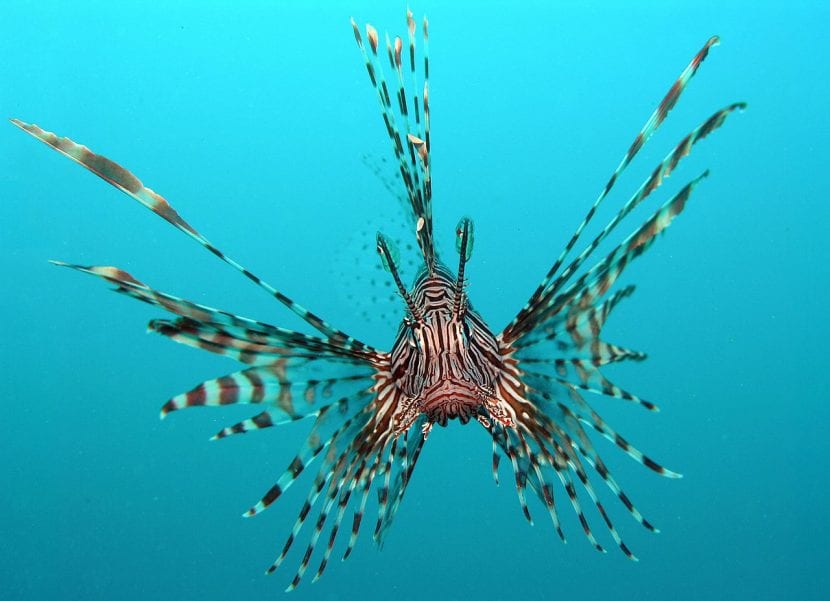
As we mentioned before, the lionfish and scorpionfish They are two very similar animals due to their physical appearance and appearance. A circumstance that has caused them to be confused, and in many cases they have been treated as if they were the same animal. Something that is not so. The reason for their similarity is that they both belong to the same family, to the order of the Scorpaeniformes.
Scorpion fish inhabit tropical waters with temperate temperatures. There are some cases of species that have spread to fresh waters, but they are rare and very rare cases. Their time passes at the bottom of the seas, there they frequently hunt crustaceans and fish, which make up the main pillar of their diet.
The body of these fish is compressed, and on the head they have ridges and spines. As a general rule, they only have a single dorsal fin that, next to the anal fin and the pelvic fins, houses poisonous glands.
Despite the fact that their venom is one of the most powerful that exists, these fish are widely used for captive breeding as aquarium animals, since they adapt very quickly to the lifestyle outside the natural habitat and their appearance makes them very attractive creatures. The biggest handicap: feeding, since these fish are predators and need to hunt live prey, something that is not easy to achieve if they are kept in fish tanks and ponds.
As you have seen, not only large animals pose serious dangers. Something as affectionate at first glance as a fish may seem, brings serious problems if we have the bad fortune of not knowing its characteristics to the letter.